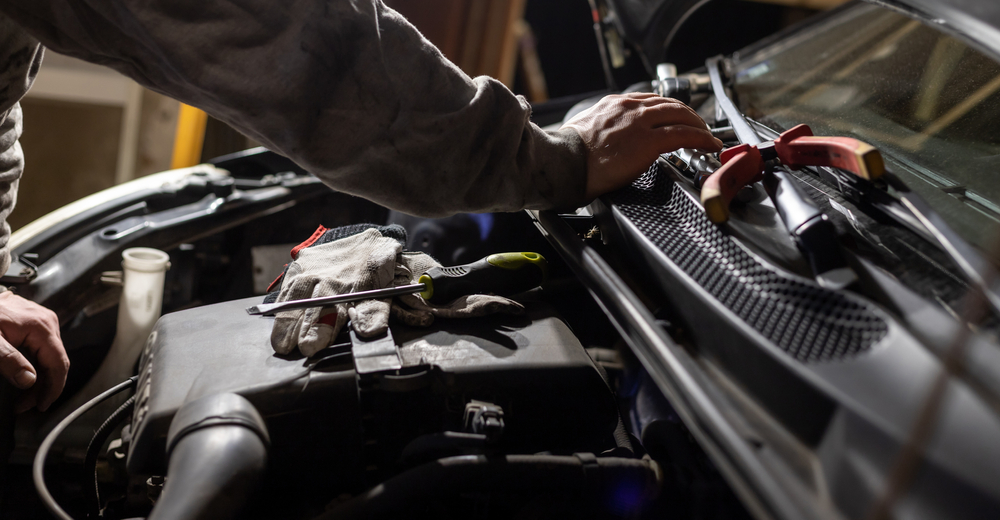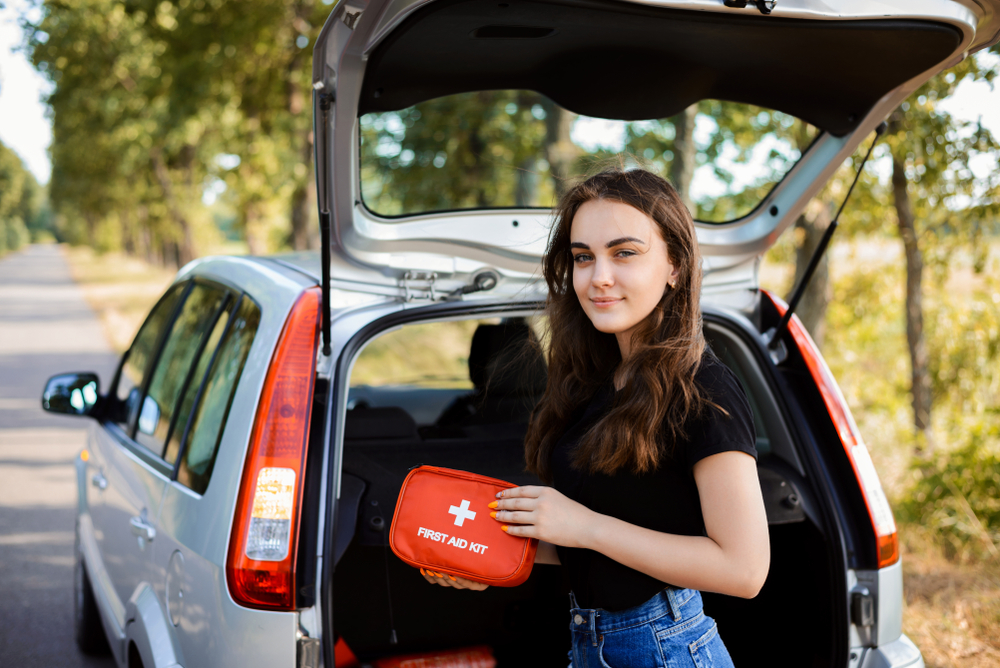By Bob Rodgers
As preppers, we know that when the brown stuff hits the fan, we need to get away from trouble fast. We made our vehicles bug-out ready, and with the simple tips from this article, any like-minded person out there can turn their family car into a bug-out vehicle.
In our country, there are plenty of natural disasters occurring each year, and people will have to deal with forest fires, hurricanes, floods, and blinding blizzards. All these disasters have one thing in common, they are causing mass evictions, and ordinary people will leave their homes in a hurry, searching for safety elsewhere.
If you want to get your family out of harm’s way, you need to have a reliable vehicle. A vehicle that’s always prepared and ready to move at a moment’s notice. Let’s discuss what items I keep in my vehicle and the steps I would follow if something were to happen.
The circumstances you may face in your state may be different, and you have to keep in mind that you will need to bring along items suited to your area. Also, you may have time to load your vehicle(s) with other items as well. This is a general guide, and the suggestions can be adapted based on your own personal situation.
What vehicle are you driving?
The answer to this question may show others that you are doing well for yourself, or perhaps you are the more frugal type, and you’re still using that Bronco you bought in the 90s. However, in case of an emergency situation, the answer doesn’t really matter since you’re not competing for looks or fame.
You basically need a vehicle that gets you and yours to safety. Not everyone has that huge 4×4 you see in commercials or custom-made vehicles that look like they were pulled out of a Mad Max movie.
The average Americans will drive their minivans or SUVs, packed with whatever they could throw in at the last minute and loaded with their families and pets.
I have a 2011 Ford F-150, and my wife drives a 2017 Toyota RAV4. Both cares are reliable, and they are set up to leave quickly if needed. If I had the occasion to choose which car I would use for bugging out, I’d go with my Ford since it has more room to accommodate gear and supplies. On the other hand, my wife insists that her car is more reliable and we should use hers in case we need to bug out.
However, since time isn’t on your side in an emergency situation, you’d want to use whatever’s available. Whatever vehicle you’re driving, it should be ready to take you where you need to go, and you should have a plan to make sure everything is covered.
You need to make sure you know which route to take and what you need to carry in your car. Those that follow a plan survive, and those without one will panic. And we all know what panic can do.
Vehicle Maintenance

Some people are driving cars that are in bad shape, and they will often postpone the required yearly maintenance due to financial reasons. If you want to use your car for bugging-out, make sure all required maintenance is up to date.
Also, it is recommended to check the fluids at least once a week if you are using the card daily and if you drive a lot of miles. Check the tires and the brakes, and if anything needs to be fixed, do it now.
If your car breaks down in the middle of the road during an evacuation, you will be in a lot of trouble. While this can be prevented by doing regular maintenance on your vehicle, you also need to make sure you bring a well-stocked toolbox along. Carry extra hoses, belts, oil, and antifreeze, but also wiper blades and jumper cables.
Also, keep your gas tank full since you might not be able to stop and refuel when the evacuation order is issued.
Bug-out Items Everyone Should Have
Our cars contain a means of communication, tools, and items for fixing the car, a first aid kit, food and water, a folding shovel, rope, and a bag containing extra clothes, both for the current season and some additional layers.
This may seem like a lot at first, but it really isn’t. My wife’s car, for example, has all sorts of compartments where all these items can be stored, and they stay out of the way during her daily commute.
Communication
When disaster strikes, your ability to communicate could be a matter of life and death. In a world where cell phones and the internet are becoming “basic human rights,” having a means of communication becomes mandatory if you want to be part of a functioning society.
When you evacuate, you need to have a safe place to go, regardless if you plan to go to your friends or family or if you have made other lodging arrangements. The people in those places need to be in contact with you at all times, and you need to communicate with them and provide updates. They should know when you left, how much time it will take you to reach them, and if any aspects of your plan have changed.
You also need the ability to communicate with emergency responders and law enforcement or other members of your party if you plan to meet them somewhere along the road.
Having a cellphone should be mandatory, but this may not be the best option since you may not have service in certain areas. Also, if you do have service, there’s always the chance that towers will go down or the network will get overloaded.
If you have the option, you can install a two-way GMRS radio in your vehicle. Such a piece of equipment will help you monitor the weather and traffic, but you can also communicate with others and call for help.
Tools and Parts
A spare tire and a serviceable jack should be available in every car. Consider carrying wrenches, pliers, slotted and Phillips-head screwdrivers, electrical tape, cable tie wraps, and anything you think may be needed for your car.
The folding shovel I’ve mentioned earlier is an indispensable tool, in my opinion, and it will prove its worth in areas where you will encounter mud, sand, or snow. Also, consider getting a tire plug kit and a tire inflator if you plan on using backcountry routes.
Once you have made a list and put together a toolbox, think about consumables. It’s always a good idea to carry some fluids like fuel, oil, power steering fluid, coolant, and other fluids your car might require.
Think about bulbs and other parts as well in case you need to make emergency repairs. If you need to repair your vehicle while on the road, there will be no AAA to help you, and you need to make sure you have everything needed in the trunk.
Food and Water
These items can be found in most cars today, but not everyone carries them with emergency preparedness in mind. While some may carry a 16-ounce bottle of water in their car at all times, in our vehicles, there are four such bottles at all times. If we plan to be out for an extended period of time, we bring more. This is good practice since you never know how long it will take until you reach your destination, regardless if you are bugging out or running errands.
Regarding food, there are always some protein bars, meat sticks, jerky, and trail mix in our cars. Items like these should be there because you may not always have time to grab your bug-out bag, or perhaps, you won’t even b able to make it home, and you need to reach your safe place as soon as possible.
Think of it like this, carry some supplies at all times that will help you keep going until you reach your destination. If you have time to stop and resupply and if stores are still open, good for you! If not, at least you will have something to keep you nourished.
First Aid Kit

Here the options may vary from one household to another, and most vehicles carry a commercial first aid kit in the glove box or in the trunk. As preppers, we have to acknowledge that we will be on our own when the brown stuff hits the fan. You will need a good first aid kit to make sure you can cover the first aid and other medical needs of your loved ones.
There are many good commercial first aid kits available on the market, and you should get one for each vehicle. Even so, I encourage people to make their own medical kits since a homemade kit not only contains everything you may possibly need but also provides you with supplies that you know how to use.
It should go without saying that when you build a homemade first-aid kit, you should test the items you put in it. And don’t get me wrong, I’m not saying here that you should test every pin and bandage you put in your first aid kit, but rather use the items which are unfamiliar to you or the person that will be using the kit.
Putting Your Car to the Test
I’ve often driven out of town with both our cars to see how well-prepared these vehicles are for the road. I would pick one route, and upon return, I would pick a different route. The rules are simple, and we are allowed to use only what we have in the car; we buy items only if we have to and make stops (intentional delays) to see how fast we can catch up.
Such experiences have taught us many things over the years, and I recommend you try something like this if you want to put your bug-out vehicle and plan to the test. I learned how to use a tire plug kit during one of these tests, and my wife learned that she can get out of mud using her shovel or that she can’t change a tire as fast as I’m doing it, but most importantly, we learned how to help each other in various situations.
Concluding
This article covers only the basic suggestions and items that should be carried in a bug-out vehicle, and every plan you make for bugging-out should be personal and tailored to your area, situation, and time (you will not bring a swimsuit if it’s the middle of winter and you probably won’t carry snow chains if you’re in July).
The key point to remember is that every vehicle can be made bug-out ready, and the items mentioned here should always be with you. If you know your vehicle is ready and equipped to bug out, you’ll have one less thing to worry about.

No comments:
Post a Comment